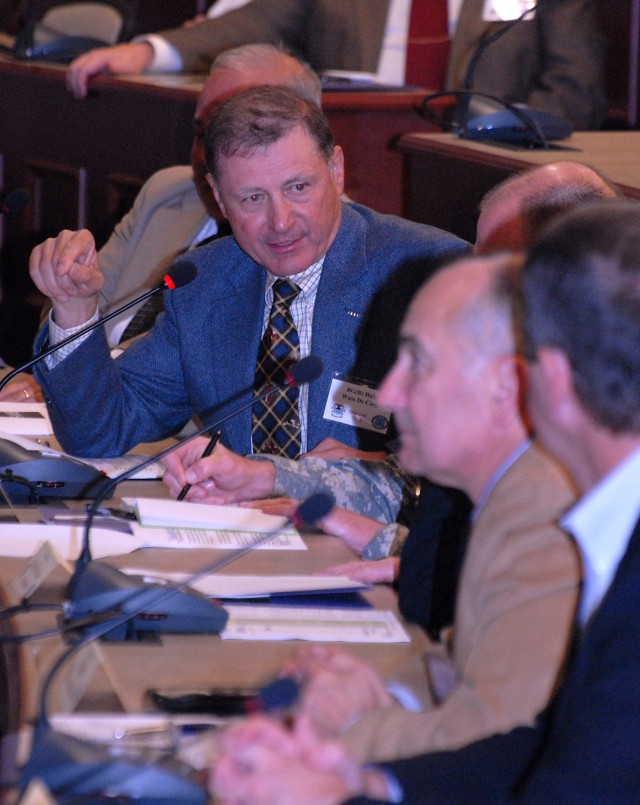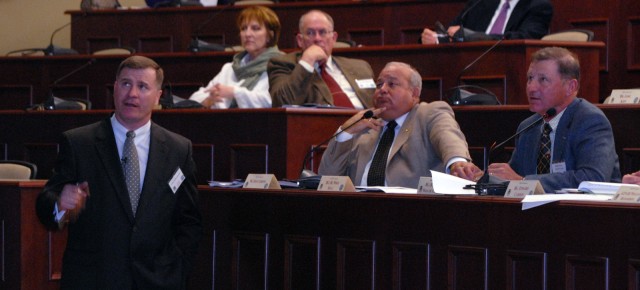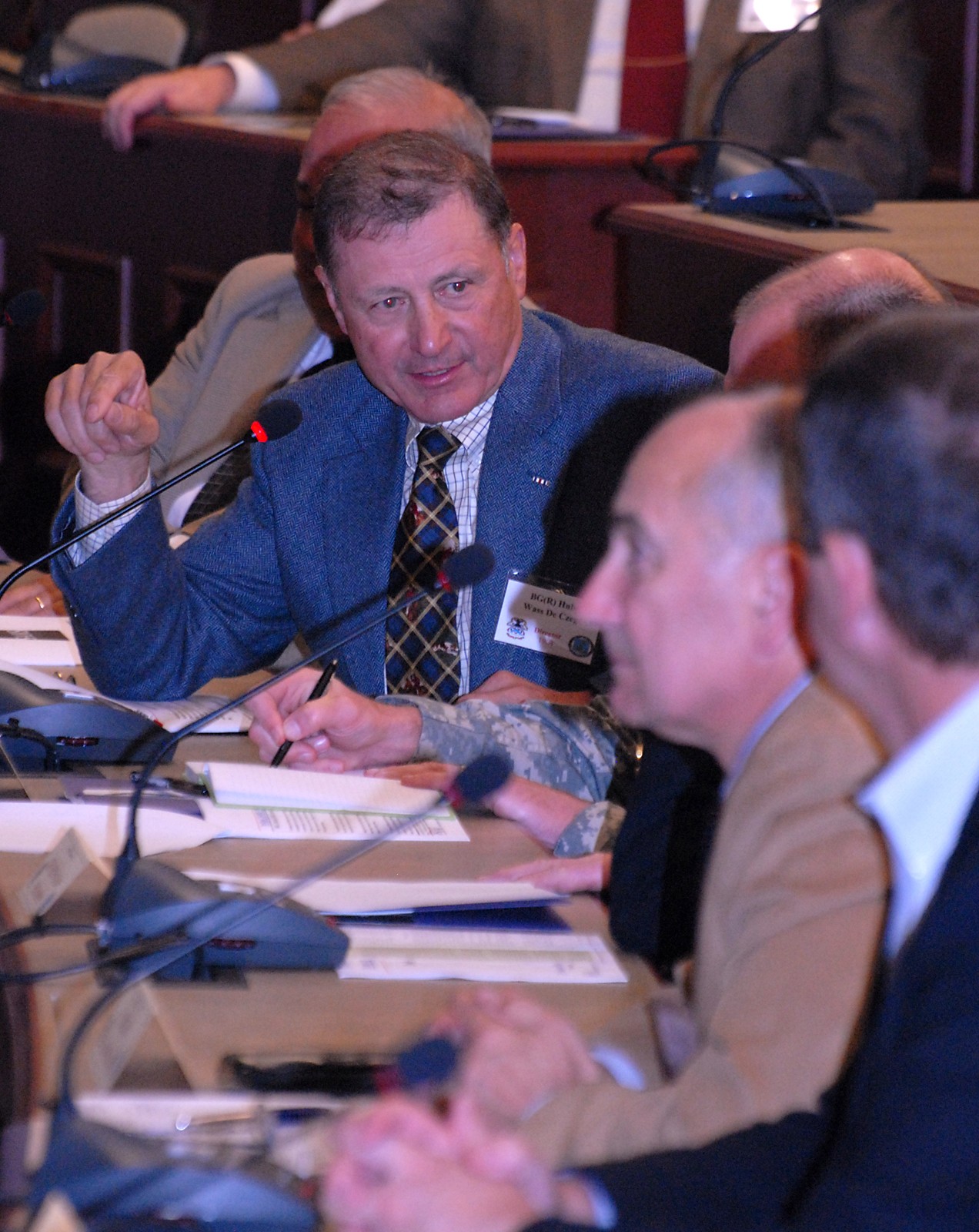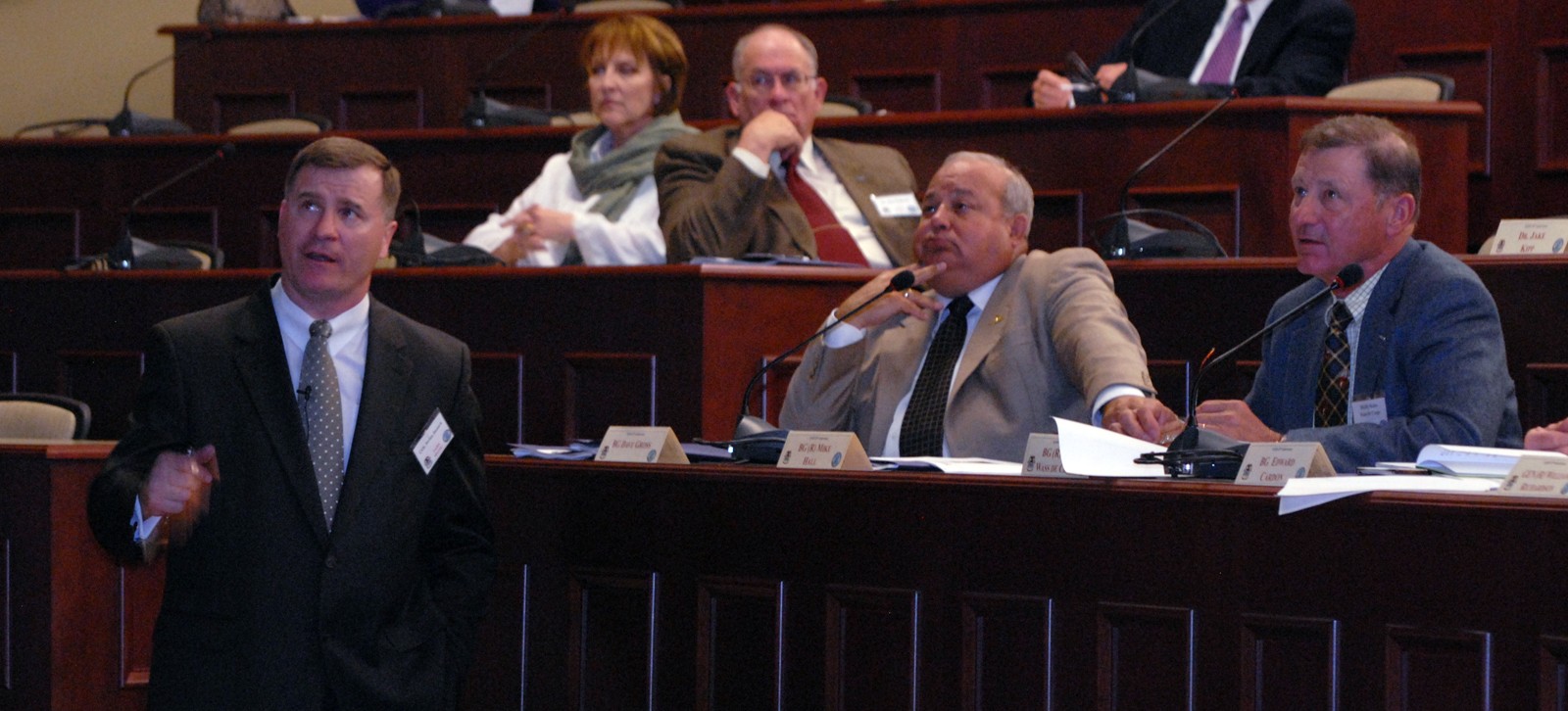FORT LEAVENWORTH, Kan. (May 28, 2009) - Two retired general officers trace the beginnings of the School of Advanced Military Studies to a boat trip on the Yangtze River in China.
It was in 1981, and then-Lt. Gen. William R. Richardson and then-Col. Huba Wass de Czege discussed plans for an advanced education program to an elite group of Command and General Staff College students. In 1983, Wass de Czege published "Army Staff College Level Training Study," which focused on the need for officers to understand the theory of warfare. CGSC had been a two-year course before World War II, and Wass de Czege wrote the "2-year Leavenworth men," made a difference in staff and command positions.
Wass de Czege said his idea began "...back on a hill in Vietnam wondering why all field grade officers above me hadn't a clue about what they were sending me out to do."
On Dec. 28, 1982, Gen. Glen Otis, commanding general, U.S. Army Training and Doctrine Command, approved a one-year extension of CGSC for selected officers. The first course began in June 1983.
Wass de Czege was the first director of SAMS. Then-Lt. Col. Hal Winton and Lt. Col. Doug Johnson constructed the course, using Wass de Czege's vision to produce "broadly educated, tactical and operational planners and thinkers." Winton, Wass de Czege and Johnson all had advanced degrees, served in combat in Vietnam and had taught at the U.S. Military Academy.
The first two civilian instructors hired were Robert Epstein and James Schneider. They wrote the school's curriculum. Epstein completed his 25th year teaching at SAMS this year.
The first class of 13 students graduated May 24, 1984. The following year, 23 graduated. During the next 16 academic years, SAMS graduated 48 students each year, divided into four seminars of 12 students. In 1987-88, SAMS graduated its first sister service members - three U.S. Air Force officers. Maj. Linda Linden was the first woman SAMS graduate in 1989, and Lt. Cmdr. Jonathon James was the first Navy graduate in 1990.
Wass de Czege, now a retired brigadier general, said the program originally began as an experiment to improve the education of officers.
He said it was during Operation Just Cause and Operation Desert Storm that SAMS graduates distinguished themselves as advanced planners and creative problem solvers.
"The performance of graduates during those two early events really built up the reputation of the school," he said.
In 1992 during a meeting of the committee on Armed Services Military Education Panel in Washington, D.C., Rep. Ike Skelton praised the school, saying, "We all know that the real stamp of approval came when Gen. (Norman) Schwarzkopf requested SAMS graduates, sometimes referred to as 'Jedi Knights,' to be sent to his headquarters in Riyadh to assist in developing the campaign plan."
In 1995, international officers from Norway and Canada joined the ranks of SAMS graduates.
SAMS added two seminars - a fifth in 2000 and sixth in 2001. In 2007, SAMS added a seventh seminar during the winter CGSC cycle.
Today, SAMS has eight seminars over two academic cycles and a ninth seminar is planned for July 2009.
This May, 106 students graduated. Since its inception 25 years ago, SAMS has graduated 1,747 students.
Editor's note: Compiled by Melissa Bower from "SAMS...The First 25 Years, A Historical Overview" by retired Col. Kevin Benson.




Social Sharing